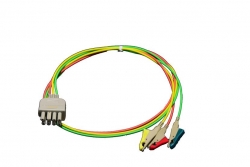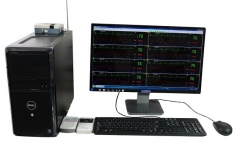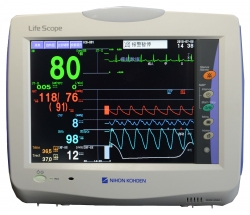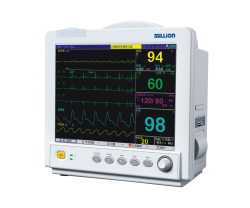Role of each part:
(1) the sensor, which is the physiological or biochemical parameter of the human body, is then converted into a corresponding electrical signal output by the physiological signal.
(2) signal processing system - electronic circuit and digital logic circuit or microprocessor, etc., to achieve the processing of sensor signals and the output of the signal to determine the correct
(3) display device - a pointer type indicator, a digital display, an oscilloscope or a signal lamp
(4) the alarm device, the audio and visual two alarm, automatically alert the medical staff when the crisis occurs.
(5) -- refers to the control system of the automatic control circuit of electronic and mechanical, such as oxygen tank inlet velocity, the flow rate of drip
(6) a recording device - to be monitored to the data archive
According to its system structure, we sum up its general working principle as follows:
The signal detection and preprocessing module of the system are used to convert the biomedical signals into electrical signals, and the signal processing system of the signal processing system can be used for interference suppression, signal filtering and amplification. Then, through the data extraction and processing module sampling, quantitative analysis, and the parameters of the setting threshold in the security monitoring range, and through the recording device will be the results of real-time storage to RAM to facilitate medical personnel can better see the changes of the patients before the signal processing system, the data can be transmitted to the display device in real-time display of the parameters, if there is a need for real-time monitoring and control, then it can be achieved through the control system.
Wechat QR code

TEL:400-654-1200







